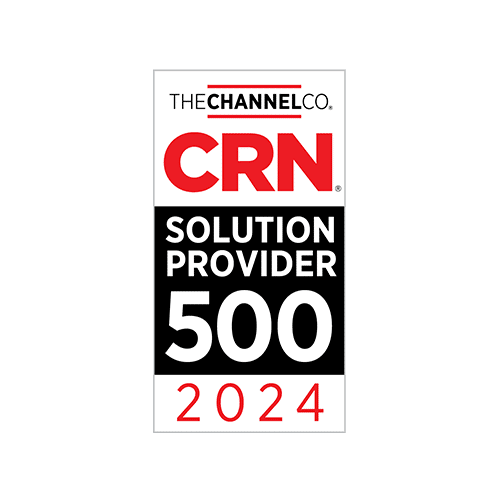Strategic Roadmaps and Delivery
Connect the Dots Between Business Strategy and Success
Most business leaders have a strong strategic vision, but few have the right teams, tools, and technologies to bring their vision to life. Strategic roadmaps can bridge the gap between business objectives, approach, definition, and execution, ensuring your implementation teams know exactly what steps to take to achieve success. The Judge Group's business strategy consultants can work across your entire organization or within specific business units to craft a plan, coordinate, and communicate with key decision makers, and put your strategy into an action plan.
Why Judge?
Our business strategy consultants create and implement strategies to help companies navigate an array of scenarios, from post-merger IT integration to enterprise-wide transformation. Our customizable approach to strategic planning and delivery allows you to scale resources up or down as your business needs evolve.
Short and Long-Term Milestones
At Judge, our business roadmaps take a bird’s eye view of your most difficult business challenges, balancing short-term priorities with long-term goals to pave the way for sustainable growth.
End-to-End Strategy Development
Our technology solutions specialists lead each step of the strategic planning and implementation process, working closely with your organization to outline goals, identify desired outcomes, and design solutions that can be achieved over a set of milestones, providing known risks, dependencies, resource needs, estimated effort and duration, granular technical tasks, possible costs, and return on investment predictions.
Our Strategic Roadmaps and Delivery Services and Solutions
Enterprise Strategic Roadmaps
By tethering your talent, IT, and project-specific objectives to larger business goals, we ensure your strategy cascades across your enterprise.

Integration Solutions
Our technology experts can seamlessly integrate new technologies into your existing enterprise systems and software.

M&A IT Roadmaps
We’ll help you map out your post-merger or acquisition IT plan, accounting for any technology, talent, or capabilities gaps and planning solutions accordingly.

Frequently Asked Questions
Strategic roadmaps provide businesses with clear, actionable plans to align operational goals with technology investments and delivery priorities. More than a high-level strategy or a project timeline, a roadmap builds a shared vision across business, IT, and leadership stakeholders. It defines where the organization is, where it wants to go, and how to get there in structured, measurable phases. With a roadmap in place, organizations can avoid ad hoc decision-making and focus on long-term value.
A well-constructed strategic roadmap is built on several core elements that ensure alignment, accountability, and execution. These include a current state analysis, clearly defined business goals, a gap assessment, and a phased plan outlining how to close those gaps. The roadmap should also include governance frameworks, timelines, assigned stakeholders, and measurable milestones. Roadmaps should be tailored to the organization’s unique needs, ensuring that the plan is both structured and flexible.
When businesses lack a strategic technology roadmap, they often face misaligned priorities, disjointed initiatives, and inefficient resource allocation. Without a cohesive plan, teams often operate in silos, make isolated technology investments, or react to issues without a clear view of long-term goals. This fragmentation can stall innovation, drive up costs, and create confusion across departments. With a clear roadmap, organizations can proactively manage change, stay focused on outcomes, and ensure that every initiative contributes to broader business objectives.
Strategic roadmapping can fall short when it becomes a static document rather than a dynamic planning tool. Common mistakes include over-focusing on short-term tactics, neglecting to involve cross-functional stakeholders, and failing to link technology investments to business outcomes. Another common pitfall is ignoring the need for flexibility—roadmaps must evolve as conditions change. Measurable outcomes should be built in from the start and all stakeholders must be invested in the process, reducing friction and improving follow-through.
IT roadmaps are not fixed—they are meant to adapt as the business evolves. Whether responding to changing market dynamics, new technologies, or shifts in business priorities, a successful roadmap must be flexible enough to absorb and reflect those changes. The best IT roadmaps are adaptive frameworks that support continuous refinement and course correction without losing sight of the long-term vision. This agility enables organizations to stay competitive, resilient, and aligned, even as their environment shifts.
Key performance indicators (KPIs) are essential to the success of any strategic roadmap, serving as clear markers of progress and performance. KPIs provide the quantifiable metrics that help organizations measure impact, track execution, and determine whether strategic goals are being met. By embedding KPIs into every phase of the roadmap, businesses gain the ability to monitor results, identify bottlenecks, and make data-informed adjustments.
Business IT roadmaps should be revisited and refreshed regularly to remain effective. While there’s no one-size-fits-all schedule, updates are typically needed in response to shifts in business strategy, evolving customer needs, emerging technologies, or changes in the competitive landscape. A static roadmap can quickly become outdated and misaligned. It is key to build in review cycles and feedback mechanisms so that roadmaps remain current, actionable, and relevant to both short- and long-term objectives.
Awards
View all NewsRelated Resources
View all ResourcesEnhancing Security And Access Controls Around Kubernetes For A Global Manufacturing Company
A large enterprise manufacturing company was using Kubernetes within their Amazon Web Services (AWS) environment to deploy and containerize applications for improved scalability and portability. As part of this critical initiative, the client turned to Judge to configure and implement enhanced security policies and access controls to meet the unique needs of this privately held organization.
Read Case Study about Enhancing Security And Access Controls Around Kubernetes For A Global Manufacturing CompanyModernizing Critical Network Infrastructure for a National Pediatric Healthcare System
One of the nation’s top children’s hospitals and leading provider of advance pediatric care systems engaged Judge Consulting Group to lead a major Edge Network Refresh across two of its most critical facilities, resulting in a reliable, scalable network foundation for critical healthcare delivery.
Read Case Study about Modernizing Critical Network Infrastructure for a National Pediatric Healthcare SystemA Multinational Pharmaceutical Company Secures Manufacturing Networks With Cisco Identity Services Engine Solution
A leading pharmaceutical and biotechnology company aimed to secure network access for wireless and wired users at their largest manufacturing facility by implementing a new dedicated Cisco Identity Services Engine (ISE) solution. The client engaged Judge Consulting to design and implement the solution due to Judge’s expertise and familiarity with the organization and facilities.
Read Case Study about A Multinational Pharmaceutical Company Secures Manufacturing Networks With Cisco Identity Services Engine SolutionMeet the Team

John T. Battaglia Visit John T. Battaglia on Linkedin
President & Chief Technology Officer, Judge Consulting & Government Services









